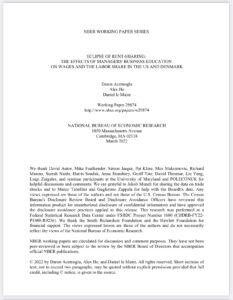CEO’s with MBA’s are no better at increasing sales or profits than CEO’s who have no MBA’s, however CEO’s with MBA’s can be bad for workers and wages.

“Better knowledge and training can make leaders more innovative and productive, raising the returns to all stakeholders. Better managed businesses can more effectively achieve whatever objectives they set, including helping to tackle the myriad challenges society faces.
But has the MBA actually achieved these goals? Our recent research suggests a much less encouraging picture. Using detailed data on companies and workers from the US and Denmark, we looked at the effects when a chief executive with an MBA or undergraduate business degree takes over from one without such qualifications.
We found no evidence that CEOs with such degrees increase sales, productivity, investment or exports relative to the levels the company achieved before. The biggest shift when a chief executive with a business degree takes charge is a decline in wages and the share of revenues going to labour, even in countries with different cultures. In the US, wages under business-degree holding CEOs were 6 per cent lower than they would otherwise have been after five years, and labour’s share of revenues was down five percentage points.”
https://www.ft.com/content/c9eb1789-b0e1-419b-b4fb-0055020e0b3b








